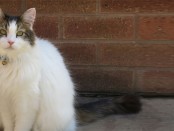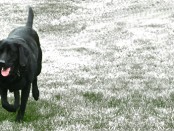CPR for Cats and Dogs
CPR for cats and dogs is similar to CPR for humans. These directions assume the animal is unconscious and the risk of being bitten by the animal is not present Remove any obstruction. Open animals mouth and make sure the air passage is clear. If not remove the object obstructing the air passage. Extend the head and give several artificial respirations: For large dogs: close the animal’s jaw tightly and breathe into the nose. The animal’s chest should rise. Give 2 breaths. For small dogs and cats you may be able to cover the nose and mouth with your mouth as you breathe. The animal’s chest should rise. Give 2 breaths. Next perform chest compression For large dogs you may be able to position the [More…]



